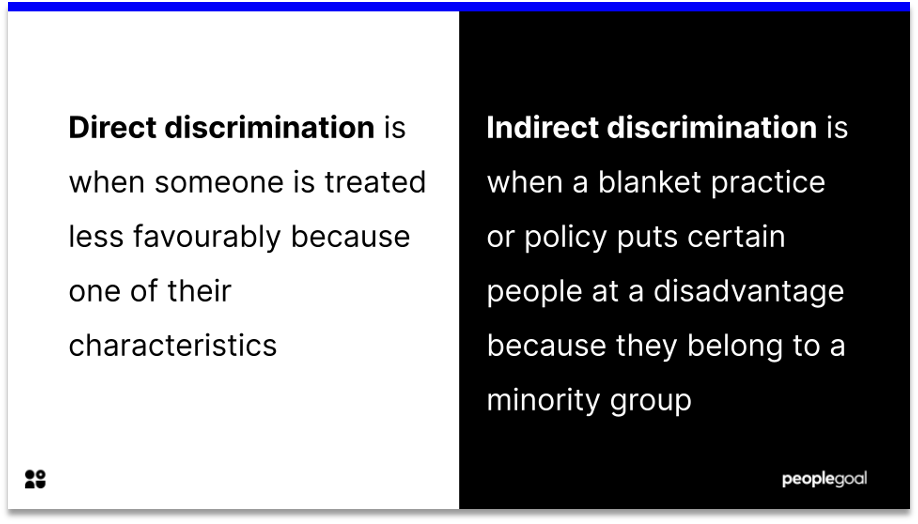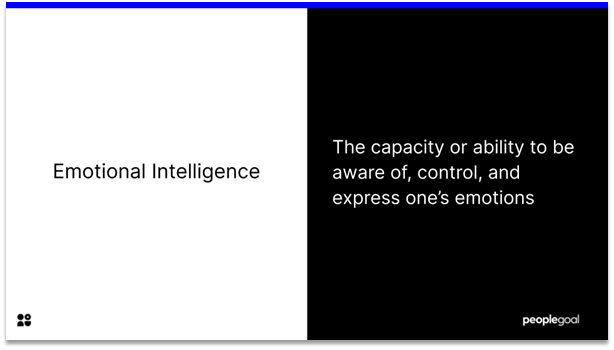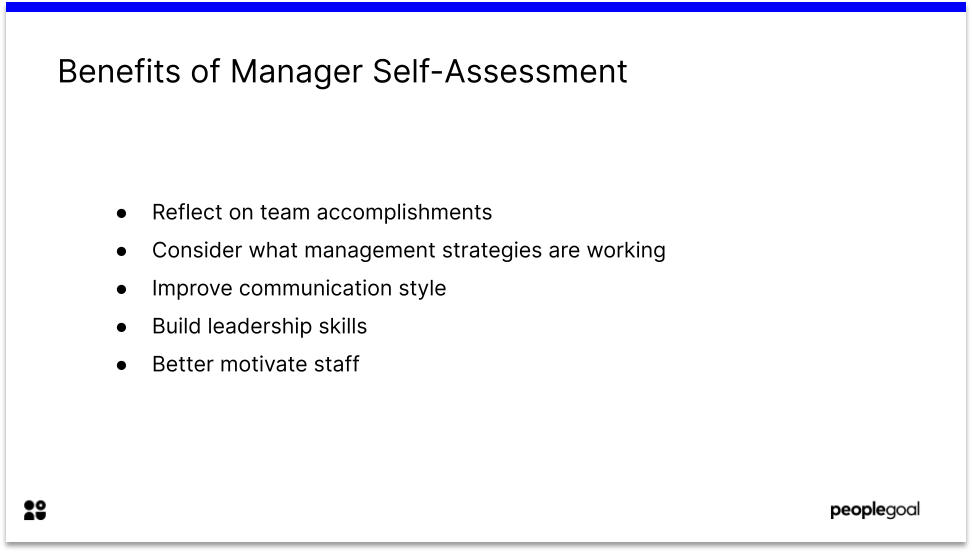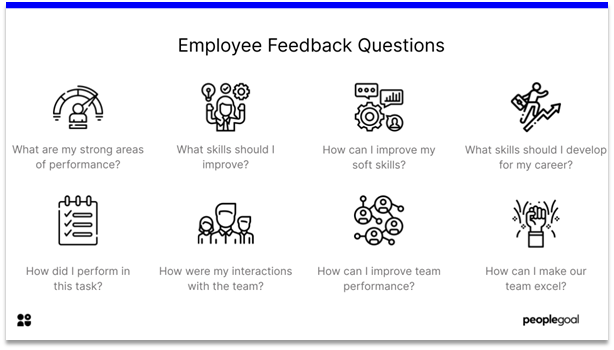Discrimination should not be tolerated in the workplace. If discrimination exists, employees will be unhappy, disengaged and turnover will be high. Any organization looking to build a strong company culture, boost engagement and create a positive work environment for employees should do everything possible to prevent discrimination. In this article we discuss the discrimination definition: what it means, what the law is and how to deal with it in the workplace.
Whilst most businesses claim to be anti-discrimination, there is still a long way to go to ensure complete diversity, equity and inclusion in the workplace. Whilst most forms of direct discrimination (more on this later) are absent from the workplace, there is still more companies can do to ensure that all employees are offered equal opportunities regardless of who they are and where they come from. Read on to find out more.
What is discrimination?
Discrimination is the unequal treatment of a person or group based on the social group, class or category to which they belong.

Discrimination occurs when an individual or group is treated unfairly or worse than others on the basis of their actual or perceived membership to a certain social category. There are many different types of discrimination, including but not limited to age discrimination, sexual discrimination or racial discrimination. Discrimination based on race, color, religion, sex, disability or age is illegal. However, discriminatory practices continue to exist in countries and institutions across the world, including in places where discrimination is penalized by the law.
Direct discrimination is when explicit policies exclude or impede particular groups from doing certain things. An example would be denying women the right to vote based on their sex. In the 21st century, direct discrimination has been mostly outlawed and now we need to turn our attention to indirect (or systemic) discrimination.
Systemic discrimination is when seemingly neutral policies have an unfair impact on a certain group. For example, certain routine practices (such as hiring processes) can either intentionally or unintentionally discriminate against certain individuals or groups. It often goes unnoticed by the majority group, and therefore needs careful work to eliminate.
Types of discrimination
Here is a list of some of the different forms of discrimination. This list is just a starting point. Remember the discrimination is the unequal treatment of a person or group based on any characteristic.
- Age
- Race or ethnicity
- National origin
- Religious belief
- Class
- Disability
- Sex or gender identity
- Sexual orientation
- Marital status
- Pregnancy or maternity leave

What is employment discrimination?
It is against the law to discriminate against someone due to any of the attributes listed above. They are protected characteristics, and you are protected at work, in education, as a consumer, when using public services, when buying or renting property or as a member of a private association.
There are two different forms of discrimination in employment: direct and indirect discrimination. Direct discrimination is when someone is treated less favourably because one of their characteristics. Indirect discrimination is when a blanket practice or policy puts a certain group of people at a disadvantage because they possess a certain characteristic or belong to a minority group.

In the UK, the Equality Act (2010) prohibits employment discrimination for nine protected characteristics: age, disability, gender reassignment, marriage and civil partnership, pregnancy and maternity, race, religion or belief, sex and sexual orientation.
In the US, employers cannot discriminate against their employees because of their race, sex (including orientation and gender identity), pregnancy, religion, national origin, disability, age, military service, bankruptcy, genetic information or citizenship status.
Read our example Diversity and Inclusion Anti-Discrimination Policy
Examples of discrimination in the workplace
- Refuse internal promotion due to African American heritage
- Demote an employee for making mistakes at work due to dyslexia
- Fire someone for being old and therefore not technology capable
- Asking an applicant to disclose disabilities that will make doing the job difficult
- Not screening names during application process
- Implementing a rule where all employees must work on Saturdays regardless of faith
- Not giving a woman a job due to her being pregnant and needing to take maternity leave
What to do if you experience discrimination at work
You are protected by the law against all forms of discrimination at work. This includes: recruitment, pay and benefits, training, promotion opportunities, redundancy and dismissal. All employees should have equal employment opportunities as standard.

If you are discriminated against at work, it is usually best to try and solve the problem informally first. Ask to have a meeting with your manager, or with another senior leader if it is your manager who has discriminated against you. Start gathering evidence as soon as possible, and make an informal complaint either in person or in writing to your employer.
If you feel that you need to take it further, you can make a formal complaint. If the matter can be settled internally and you still wish to remain at the company, you can negotiate with your employer to reach a mutual agreement.
If the matter is more serious, you might want to enlist a trained mediator to help you reach an agreement before taking legal action. As a last resort, you can take legal action at an employment tribunal. This is only if the matter cannot be resolved in any other way.
Ideas to reduce discrimination in the workplace
Your employer should have an anti-discrimination policy in place to help fight discrimination in the work place. Moreover, the United States has implemented a policy of affirmative action which is an active effort to improve employment opportunities for minority groups. Some organizations have even chosen to celebrate Zero-discrimination day to celebrate and promote equality. It is also important to run regular diversity and inclusion surveys, and provide formal diversity training to employees (especially managers).

Find out more: Practices and Activities to Promote Diversity, Equity and Inclusion in the Workplace
Next steps:
- Read our Essential Guide to Diversity and Inclusion
- Download our Diversity and Inclusion Anti-Discrimination Policy
- Find out about running a Diversity and Inclusion survey with PeopleGoal here
Ready to 3x Your Teams' Performance?
Use the best performance management software to align goals, track progress, and boost employee engagement.






